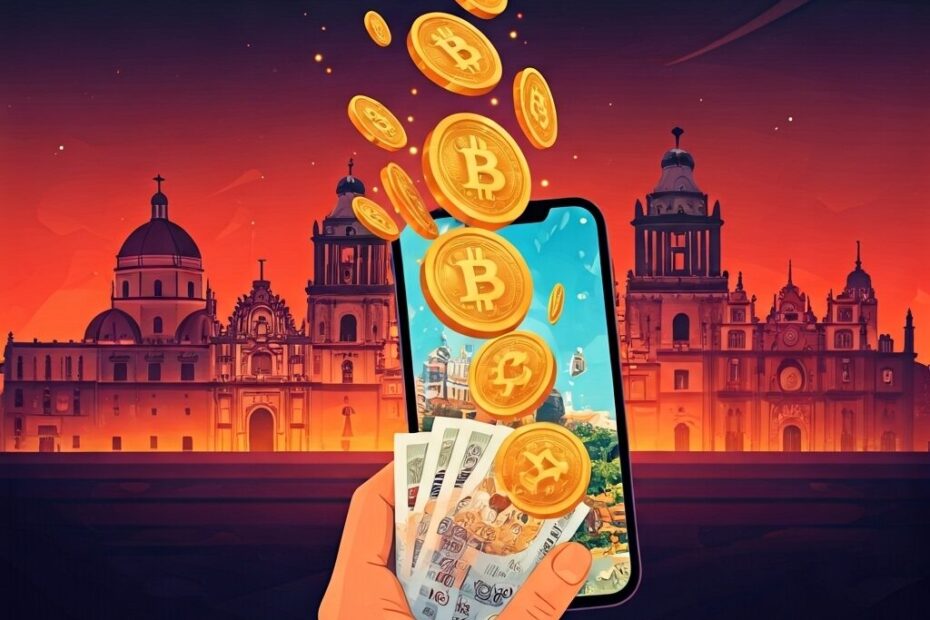RedotPay Expands Cross-Border Crypto Payments To Mexico With ‘Send Crypto, Receive MXN’ Via CPN
John: Hey everyone, I’m John, your go-to tech blogger at Blockchain Bulletin, where I break down the latest in Web3, metaverse, and blockchain tech. Today, we’re diving into RedotPay’s recent expansion that lets users send crypto and receive Mexican Pesos (MXN) through their Circle Payments Network integration—it’s a step forward for easier cross-border payments in Mexico. If you’d like a simple starter guide to exchanges, take a look at this beginner-friendly overview.
Lila: That sounds exciting, John—I’ve heard readers are buzzing about how crypto can make international money transfers simpler and cheaper. So, what’s the big deal with this RedotPay update?
What is RedotPay?
John: RedotPay is a payment solutions platform that focuses on crypto cards and global payments, allowing users to convert and spend crypto easily. It’s backed by Coinbase and uses blockchain tech for secure, borderless finance. Currently, as of 2025-10-12, their services include fast crypto-to-fiat conversions in various regions.
Lila: Fiat? What’s that mean in simple terms?
John: Fiat just means traditional government-issued money, like the US dollar or Mexican Peso (think everyday cash, not crypto). RedotPay bridges crypto to fiat, making it practical for real-world use.
The New Feature Explained
Lila: Okay, got it. Now, tell me more about this ‘Send Crypto, Receive MXN’ thing—what does it actually do?
John: This feature, launched on 2025-10-10, lets users send cryptocurrencies like USDC, ETH, or BTC, and have the recipient get Mexican Pesos directly. It’s designed for faster, lower-cost transfers compared to traditional remittance services. In the past, cross-border payments in Mexico often involved high fees and delays, but this aims to change that.
Lila: How low are those costs, and who can use it?
John: Fees are under 1%, based on recent announcements, and it’s available to users in 34 supported countries sending to Mexico. Recipients can withdraw at over 12,000 bank branches or 18,300 convenience stores there.
How It Works with CPN
Lila: CPN? That sounds like another acronym—break it down for me.
John: CPN stands for Circle Payments Network, a system by Circle that enables institutions to move value 24/7 using stablecoins like USDC. RedotPay integrated with CPN to make these payouts seamless. Currently, you send crypto through RedotPay, it converts via CPN, and MXN lands in the recipient’s bank account or as cash instantly.
Lila: So, it’s like a bridge between crypto and local money?
John: Exactly. For example, someone in the US could send USDC, and a family member in Mexico gets MXN without waiting days for a wire transfer.
Background and Timeline
Lila: Has RedotPay done this before? What’s the history here?
John: In the past, RedotPay rolled out a similar feature in Brazil on 2025-06-02, allowing crypto sends to Brazilian bank accounts via CPN. This Mexico expansion builds on that, announced on 2025-10-10. It’s part of a broader push for financial inclusion in Latin America, where remittances hit $64.7 billion in Mexico alone last year.
Lila: Wow, that’s a huge market. Any other key dates?
John: Yes, posts on X from RedotPay Official on 2025-10-10 confirmed the launch, and news from sources like CoinDesk noted the Brazil precedent earlier in 2025.
Use Cases and Benefits
Lila: Who would actually use this, and what are the perks?
John: It’s great for remittances—think families sending money home quickly. Businesses could use it for payroll or supplier payments across borders. Benefits include near-instant transfers, low fees, and support for multiple cryptos, advancing accessibility in regions with high unbanked populations.
Lila: Can you give some practical tips for getting started?
John: Sure, here’s a quick list of steps based on their official site:
- Sign up on RedotPay’s platform and verify your account.
- Load crypto like USDC or BTC into your wallet.
- Select the ‘Send Crypto, Receive MXN’ option and enter recipient details.
- Confirm the transfer—fees are transparent upfront.
- Don’t forget to check local regulations, as compliance varies by jurisdiction; always review official docs for your area.
John: (And hey, if crypto wallets feel overwhelming, start small—it’s like dipping your toes in a pool, but without the splash.)
Risks and Considerations
Lila: Sounds useful, but are there any downsides or things to watch out for?
John: Currently, crypto volatility could affect the value before conversion, so use stablecoins like USDC for stability. Security is key—RedotPay uses blockchain for protection, but always enable two-factor authentication. Regulatory note: Crypto payments are evolving, and rules differ by country; for instance, Mexico has guidelines from its central bank, so check official sources to stay compliant.
Lila: Good to know—better safe than sorry.
Looking Ahead
John: Looking ahead, RedotPay might expand to more countries, building on this and the Brazil model. As of now, no specific future dates are announced, but integrations like this could grow with rising stablecoin adoption. It’s all about making global finance more inclusive step by step.
Lila: Any final thoughts on where this fits in the bigger picture?
John: This update shows how blockchain is streamlining real-world payments, from past high-fee systems to current efficient ones. It’s encouraging for beginners exploring Web3—keep learning as the tech evolves. And if you’d like a bit more background on exchanges, you might enjoy this global guide.
Lila: Thanks, John—that makes crypto payments feel a lot less intimidating. Readers, give it a try responsibly and stay informed!
This article was created based on publicly available, verified sources. References:
- Original Source
- Coinbase-backed Redotpay launches ‘Send Crypto, Receive MXN’ program in Mexico
- Crypto Payments Firm RedotPay Enlists Circle Payment Network in Brazil
- RedotPay: The Ultimate Crypto Card for Secure Crypto Payment
